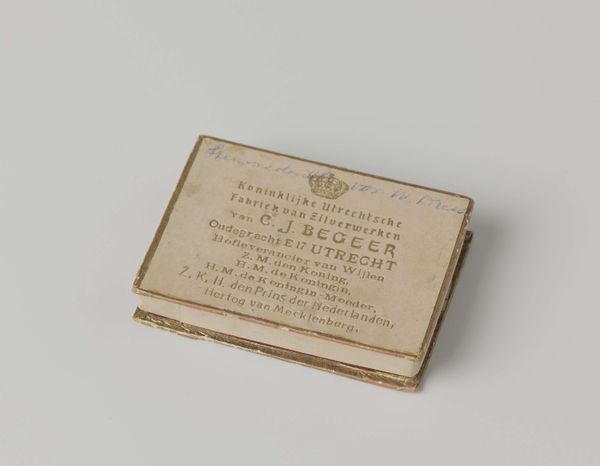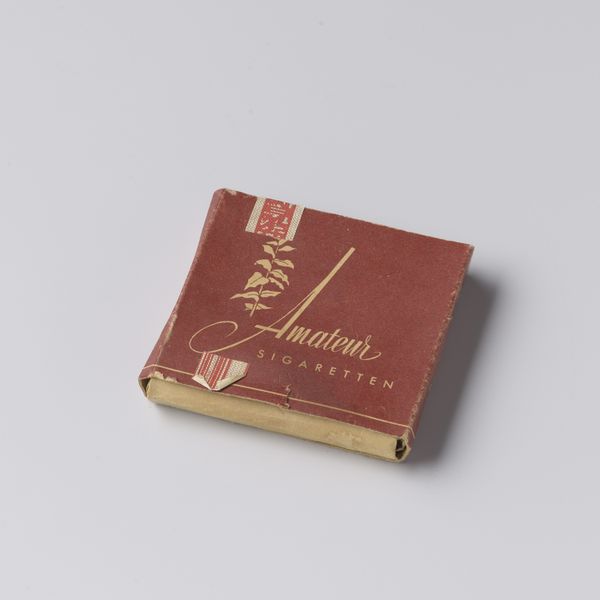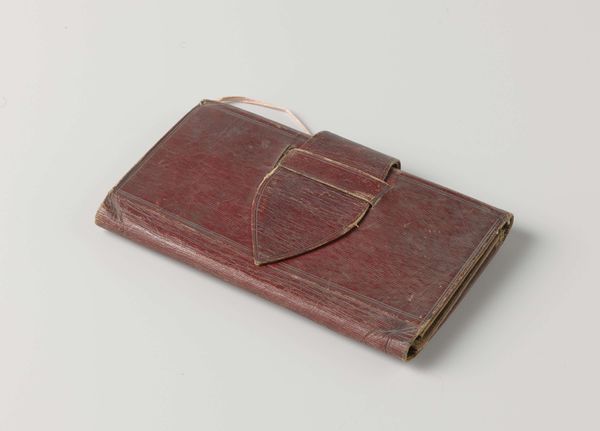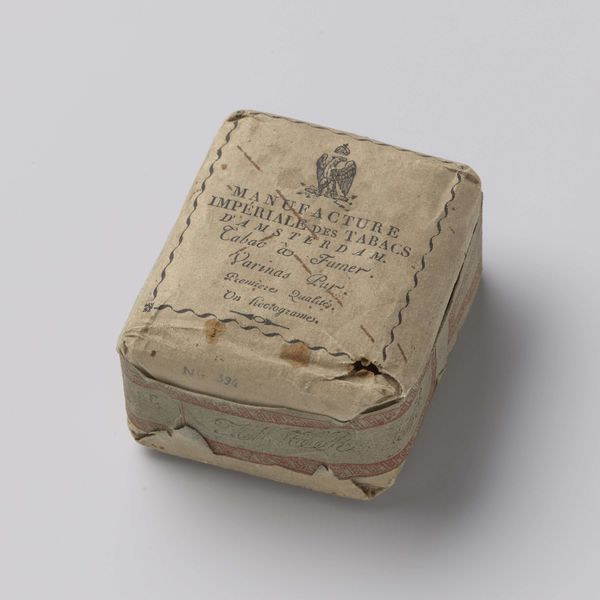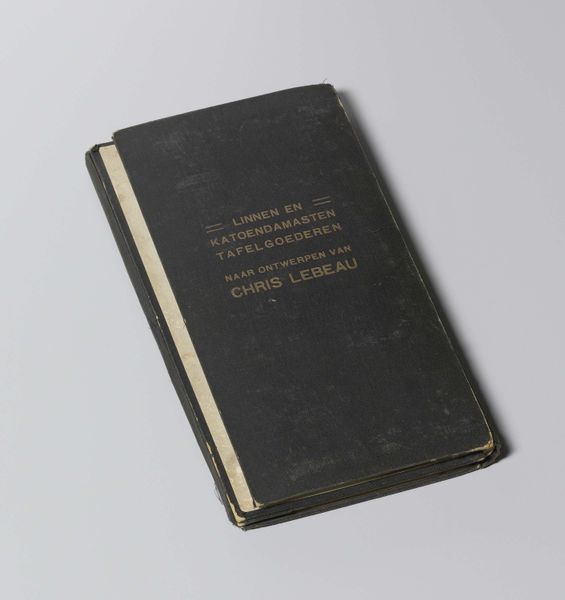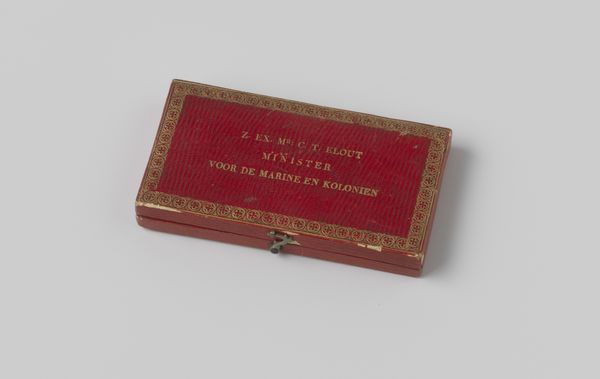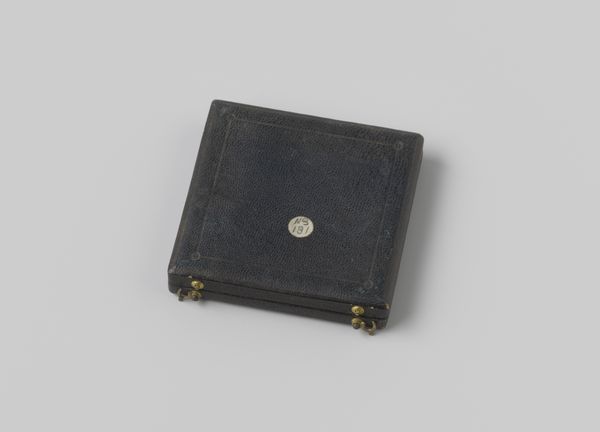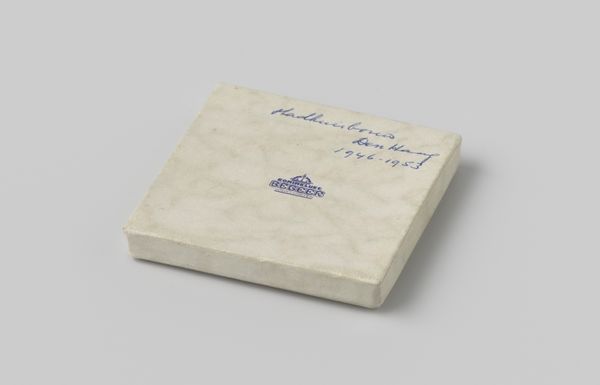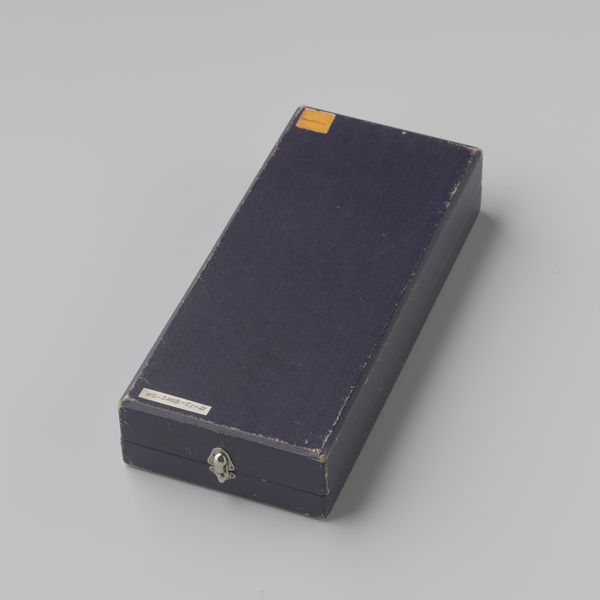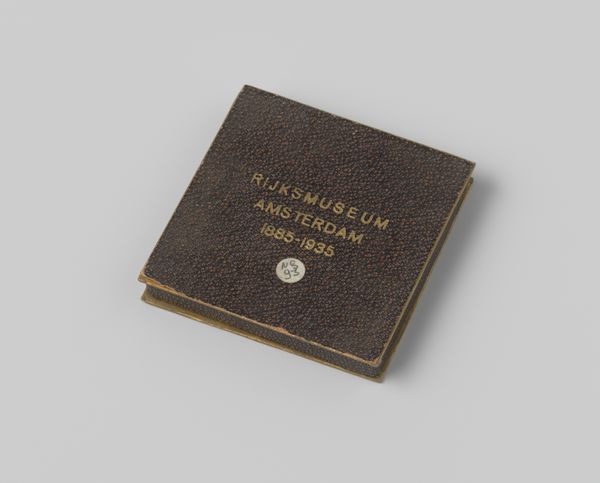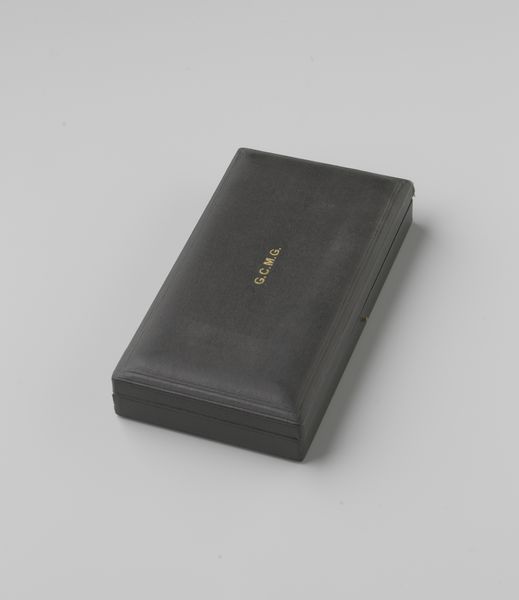
photography
#
product studio photography
#
product shot
#
still-life-photography
#
art-nouveau
#
flat design on paper
#
studio lighting mockup
#
presentation design mockup
#
photography
#
metallic object render
#
publication mockup
#
graphic design product photography
#
mockup template
#
product render
Dimensions: height 9 cm, width 9 cm, depth 2 cm
Copyright: Rijks Museum: Open Domain
This box, made to house a bronze medal by Adolph Alexander Weiman, is interesting to me as a painter because it shows how even the container becomes part of the art. The box itself, with its deep reddish-brown and gold lettering, isn’t just a neutral carrier. It's got wear and tear, a distressed surface, like an aged canvas that bears witness to its history. I wonder about the texture of that box, the feel of the paper or cardboard. Is it smooth, rough, or slightly worn? Those tactile qualities, though invisible here, add another layer to our understanding. The inscription, "Universal Exposition 1904 Saint Louis," hints at a specific time and place. It’s not just about what the box contains but what it represents, like a memory or a relic from a bygone era. I am reminded of Rauschenberg's boxes from the '50s, where the container is as important as the stuff inside. Both embrace the idea that art can be found in the everyday, blurring the lines between object and experience.
Comments
No comments
Be the first to comment and join the conversation on the ultimate creative platform.

